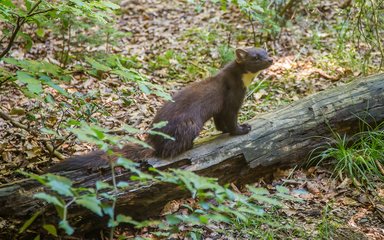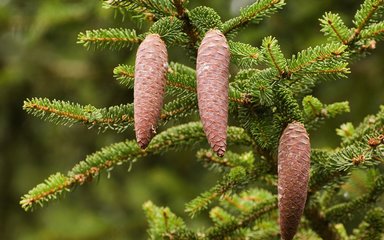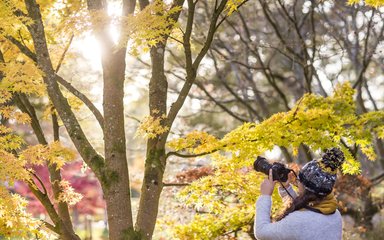
We live and breathe forests. We care for over 1,500 woods and forests and grow millions of trees each year. So why do we cut trees down?
We can’t survive without trees, and we need to plant more. So it may feel like felling trees should be bad, but in fact - when done responsibly - it can actually be good for the health of forests. Whether it’s for harvesting sustainable timber, protecting trees and people, or creating new habitats, read on to discover reasons why it’s sometimes good to cut down trees.
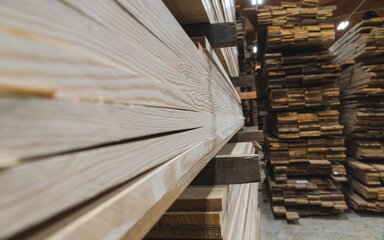
1. Providing sustainable timber
We all use things made from wood. From the books we read and paper we write on, to the furniture in our homes. When forests are looked after properly, they can provide a renewable source of wood forever.
Our forests are independently certified, meeting national and international standards of sustainable forestry. We manage the nation's forests to balance the benefits they offer, providing habitats for wildlife and spaces for people to enjoy. By providing homegrown timber to the nation, we can also reduce demand on resources of other countries where forests may not be managed as responsibly.
Growing and using sustainable wood also helps tackle the climate crisis. For a sustainable future we need to use more wood to replace fossil fuel intensive products, like plastic, and to lock up carbon. When you shop for wood and paper products, look for the FSC® or PEFC logos. This means the wood comes from well-managed forests, like ours.
2. Keeping us safe
Millions of people visit the nation’s forests every year to relax, to play or to exercise. We care for over a billion trees, and any one of them can be a potential danger to our staff or people enjoying the outdoors.
Storm damage or disease can cause a tree to become brittle, lose branches or fall down entirely. So to protect everyone’s safety, we remove trees that are a risk. This is especially important if they’re near to places like a play area or walking trail.
The wood isn’t wasted, and can often be left in the forest as deadwood to provide vital habitat for a range of creatures.
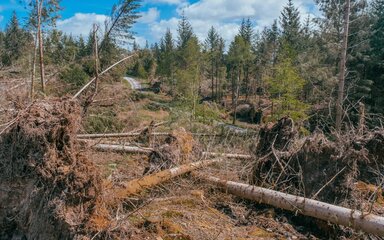
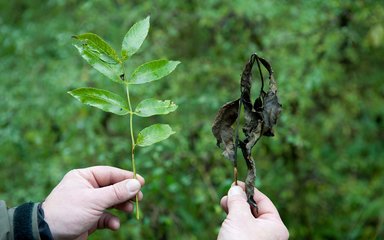
3. Protecting tree health
We care for trees throughout their life and work hard to keep them healthy. But just like us, sometimes trees get ill. The spread of pests and diseases can cause devastating impacts to our woodlands and kill huge numbers of trees.
Working with colleagues in the Forestry Commission, we monitor trees to spot early signs of disease or damage. Any problems we do spot are treated to control their spread and protect other trees.
Sometimes this means we have to remove some affected trees to protect the others and keep them healthy. To protect the future of our forests we sometimes need to take drastic action.
4. Thinning out forests
When we plant a forest, we often place trees close together so that they grow tall and straight with fewer branches. This produces stronger timber with fewer knots in the wood. Some trees will not grow as well as others, so we fell the smaller trees to create space and light for the others to grow better. This is called thinning.
The wood from the smaller trees that are thinned is used for things like fence posts, pallets, wood chips and fuel. The remaining trees will carry on growing and produce a good quality timber crop.
Thinning also lets more light in to the forest floor, which increases the diversity of plants in our woodlands and encourages more wildlife.
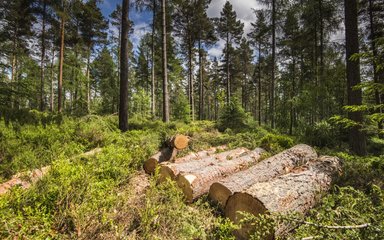
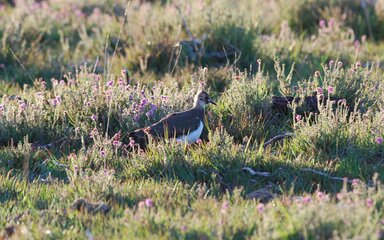
5. Creating other habitats
The nation’s forests are a patchwork of different habitats all at different stages of the forest lifecycle. All woodlands are important for wildlife, but it’s not just about trees.
Protecting and restoring other habitats across England is an important part of our work. Almost one fifth of our landscapes are types of open spaces managed primarily for wildlife. Open habitat is important for a range of species, including ground-nesting birds.
We manage landscapes to provide the best balance of benefits for people, nature and the economy. Sometimes this means removing existing trees or choosing not to replant after harvesting timber. This helps to restore important habitat like heathland, peatland and wetland areas.
Growing the future
We're able to share and care for amazing places and incredible wildlife because of the timber we produce.
Whenever we fell trees, more are planted to make sure our forests are maintained for future generations. Money raised from selling timber provides a sustainable income that we invest back in to caring for the nation’s forests, increasing the benefits they provide for people, nature and the economy.
We're committed to growing the nation's forests by creating new woodlands for everyone to enjoy.

